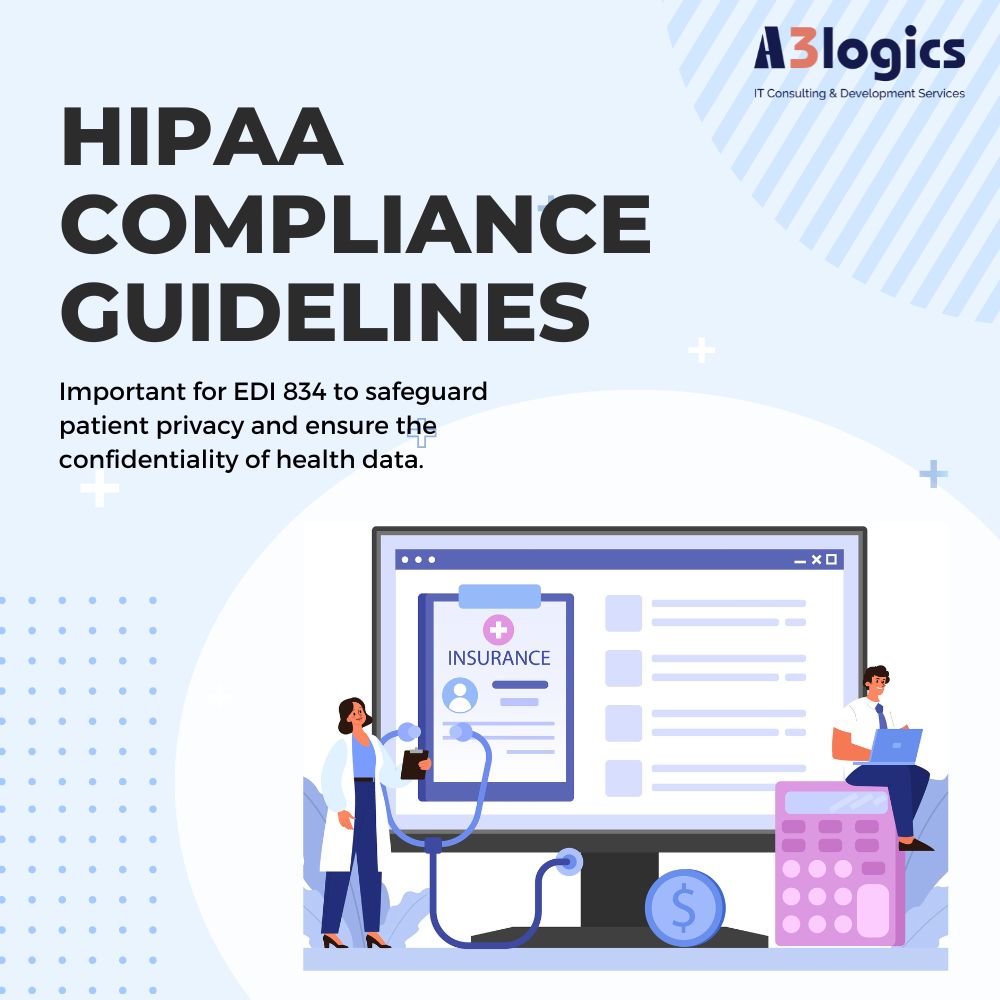HIPAA came in 1996 to safeguard individuals’ healthcare data privacy and security. With advances in technology, EDI in healthcare has become widely utilized. This is for exchanging enrollment data in 834 formats EDI 834 systems; therefore, digital systems users need to appreciate HIPAA compliance to protect sensitive patient information.
HIPAA Compliance: Overview
HIPAA stands for Health Insurance Portability and Accountability Act in the U.S. It refers to efforts undertaken by healthcare organizations or any entity responsible. This is for handling PHI to comply with HIPAA rules as per legislation.
One of the key components of HIPAA compliance is protecting PHI. This refers to any individually identifiable health data transmitted or maintained by covered entities. Individuals or organizations perform certain functions or activities on behalf of covered entities such as business associates performing functions on their behalf.
Importance of HIPAA Compliance:
HIPAA compliance is vitally important to any organization that handles PHI. It ensures patient privacy and secures their health information. Not only this, but it also helps organizations avoid legal and financial repercussions as well. By following HIPAA’s regulations and safeguards closely, organizations can cultivate an atmosphere of security and trust within healthcare.
The best part to understand the same is to connect with the best benefits enrollment company for all the assistance.
Understanding EDI 834 Enrollment Data:
834 benefits enrollment and maintenance is an industry-standard used in healthcare. It is done to transmit enrollment and eligibility information. Understanding its significance for healthcare organizations, insurers, and other parties involved with enrollment processes is imperative. Let’s explore its significance as well as its components.
First and foremost, EDI 834 enrollment data provides a standardized method of exchanging enrollment information between entities. This ensures the data remains consistent, accurate, and easily understandable. All this without manual data entry, errors occur less often, and improved efficiency.
Best Practices For Maintaining HIPAA Compliance In EDI 834:
Organizations engaging in EDI 834 transactions must follow best practices to comply with HIPAA. EDI 834 involves exchanging health insurance enrollment and maintenance information. To protect both the security and privacy of protected health information (PHI), organizations should follow best practices for HIPAA compliance in EDI 834 transactions. Here are a few practices:
- Conduct a Comprehensive Risk Evaluation
- Implement Administrative Safeguards
- Encrypt PHI
- Utilize Secure Communication Channels
- Implement Access Controls
- Train Workforce
- Monitor and Audit
- Business Associate Agreements (BAAs)
- Incident Response Plan (IRP)
- Regularly Update Security Measures
Benefits of HIPAA Compliance in EDI 834:
HIPAA compliance is of utmost importance when dealing with electronic data interchange (EDI) 834 transactions for enrollment and disenrollment transactions, so this article focuses on its benefits and significance within this standard.
- Protect Patient Privacy
- Legal Compliance
- Data Integrity
- Improved Data Security
- Increased Efficiency and Cost Savings
- Interoperability and Standardization
- Improved Patient Experience
HIPAA compliance in EDI 834 can bring many advantages for its patients. By streamlining enrollment and disenrollment processes, individuals may enjoy faster response times. All this with fewer paperwork requirements, and improved accuracy in healthcare information. It also increases satisfaction with healthcare outcomes and greater overall healthcare satisfaction.
Final Thoughts:
HIPAA compliance guidelines are fundamental in protecting enrollment data under EDI 834. They ensure the protection of sensitive personal health data while simultaneously protecting individuals’ privacy and security. By adhering to HIPAA regulations, organizations can prevent unapproved access, use, and disclosure of enrollment data.
Original Source: https://www.a3logics.com/blog/how-hipaa-compliance-guidelines-are-important-for-edi-834-enrollment-data






Comments